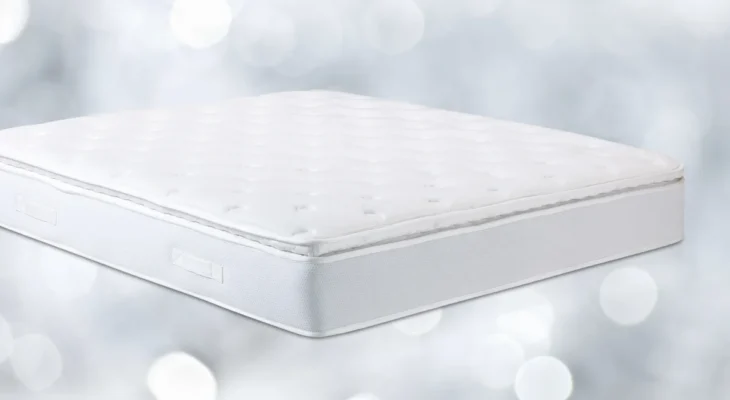Due to the humid environment, a mattress can become, a kind of fungus or mold that often develops. The mold feeds on our dead skin cells. It reproduces in lightweight spore form and travels through the air. As such, they are harmless, but when they are settled on a damp surface, can rapidly multiply and destroy your mattress.
Typically, mold is brown, green, purple, or yellow. It may grow almost anywhere, whether it is damp walls or carpets, or even mattresses. Mattress mold can occur irrespective of whether you are using an organic or synthetic mattress.
If anyone remains constantly exposed to such mattress mold, then it can cause disturbed sleep and allergies. However, it is possible to get rid of such molds on mattresses by using a few home remedies and also by taking certain precautionary steps.
What are the main reasons for mold on mattresses?
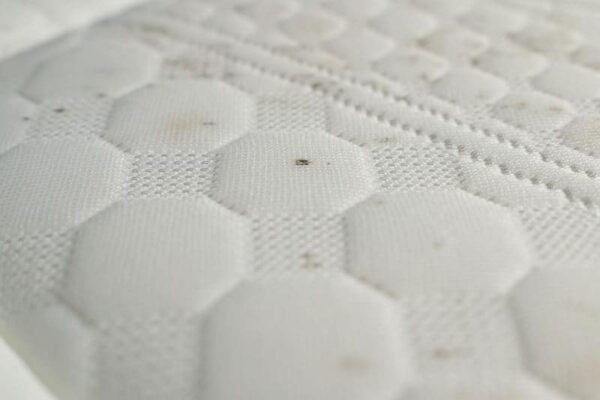
Mold is a type of fungus that can grow in many different environments. It thrives in moist conditions and can often be found in bathrooms, kitchens, and basements. Mold can also grow on mattresses, particularly if the mattress is made of natural materials like latex or wool.
There are a few different reasons why mold might grow on a mattress. First, if the mattress is located in a room with high humidity, this can create the perfect conditions for mold to thrive. Second, if the mattress is frequently exposed to sunlight, this can also contribute to mold growth. Third, if the mattress is not properly ventilated, this can also lead to mold growth. Finally, if the mattress is made of natural materials like latex or wool, these materials can provide food for mold spores to grow.
If you think you might have mold on your mattress, there are a few things from which you have identified the mold in your mattress.
How do I identify the problem?
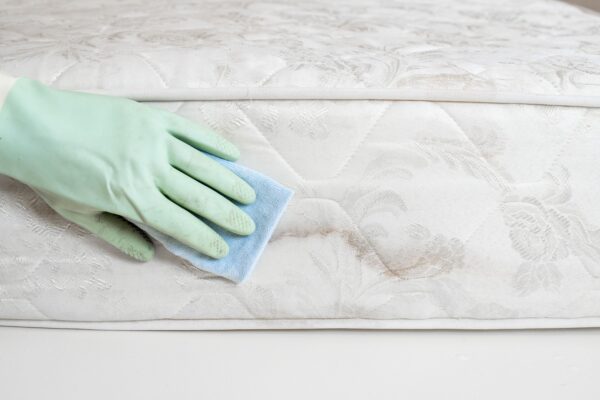
Mold or mildew in the mattress may not be easily noticed at first, particularly if you don’t have any tendency to check your mattress while changing your bedding or if you always put on a mattress cover. However, there are a few signs as follows that will indicate their presence.
1. Smell
These spores may have a persistent smell and often you cannot associate them with your mattress immediately. However, it will remain consistent. When you have exhausted all the possible sources, then make sure that you start looking at the other unobvious places like your mattress.
2. Health problems
Most of you may spend 8 hours at night in your bed and thus most of your whole day remains constantly exposed to a certain health hazard. While you will recover most of the time from such spore exposure, the duration of the exposure and also the intensity of the mold may cause certain health issues.
Usually, exposure will cause an allergy, itchy eyes, headaches, congestion, exhaustion, etc. If you are suffering from such mold/mildew exposure then you will feel better if you leave the infected area or simply go to any other part of your house.
3. Appearance
Finally, it will reveal itself, and you can see that it is unlike any other stain. It will grow in the darker areas, particularly where your mattress will see the minimum amount of light. If you have any doubt then you can take the help of an expert or use any test kits to determine it.
How can you remove mold from your mattress?
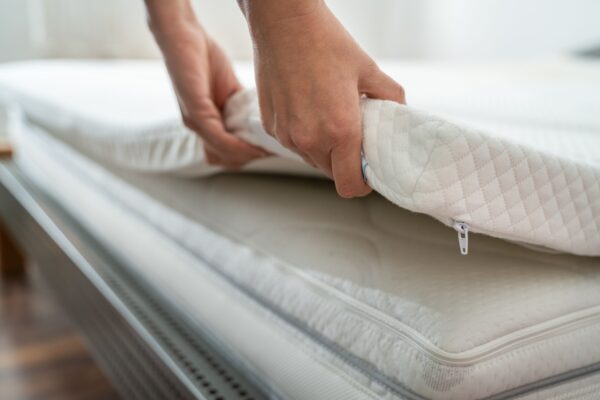
Mold is a type of fungi that can grow in any moist environment. When mold spores land on a wet or damp surface, they can begin to grow and multiply. If left unchecked, mold can quickly spread and cause serious damage to your home.
Mold is especially harmful to your health, as it can cause respiratory problems, skin irritation, and even lead to serious illnesses such as pneumonia. If you suspect that you have mold in your home, it’s important to act quickly to remove it.
Luckily, cleaning mold from a mattress is quite simple provided the mold has not penetrated deeply into your mattress. You may also check here for the instructions provided by the manufacturer about cleaning the mattress before you start cleaning it to make sure that you do not damage your sleeping area.
The following are a few steps that you must take if you try to remove mold from your mattress.
1. Vacuum your mattress
On both sides of the mattress use a vacuum cleaner for pulling out gunk, dirt, and mold. Also, you must wipe the vacuum cleaner immediately to get rid of any spores so that they may not spread into your other room and contaminate any other items.
2. Prepare the cleaning mixture
For treating the affected area, mix equal parts of water (warm) and rubbing alcohol. Dip any clean towel and then ring it out to dampen the mold-stained area. Start scrubbing your mattress circularly by exerting a little force, to penetrate a little deeper into the mattress.
3. Blot the area
Now wipe the area by using a damp clean towel. Rinse by using warm water and any tightly-wrung-out cloth for preventing any moisture so that it may not lead to more mold formation.
4. Use a disinfectant
To kill germs and bacteria, spray disinfectant all over the mattress. Check the label pasted on your mattress before using any of the disinfectant solutions. It will help to make sure that the solution will be suitable for the mattress material.
5. Ventilate your mattress
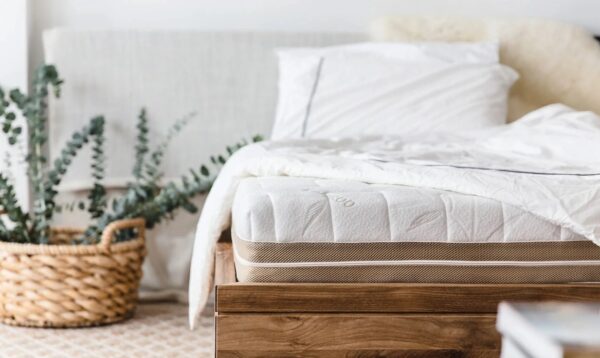
After you have cleaned your mattress thoroughly, place it in a certain highly ventilated area for drying off any leftover moisture. Exposing it to sunlight can help you to remove germs and also speed up your drying process. It can also inhibit any growth of mold because sunlight can effectively kill mold spores.
6. Bleach Solution
One way to get rid of mold is to use a bleach solution. Bleach is a powerful disinfectant and will kill mold spores. To make a bleach solution, mix one-part of bleach with three parts of water. Then, use a sponge or brush to apply the solution to the moldy areas of your mattress. Let the solution sit for a few minutes, then rinse it off with clean water. If the mold is stubborn, you may need to repeat this process. However, eventually, the mold should be killed and you can sleep on your mattress again without worrying about harmful mold spores.
7. Contact a professional mold removal company
One common place mold can grow is on mattresses. Mattresses are often made of materials that are conducive to mold growth, such as foam or natural fibers. If you think you have mold on your mattress, it’s important to contact a professional mold removal company to get rid of the mold safely and effectively. A professional mold removal company will have the experience and expertise to safely and effectively remove mold from your home. They will also be able to provide advice on how to prevent mold from returning in the future.
Still, if the mattress is too moldy, it’s probably time to replace your mattress.
Bottomline
Mold on mattresses is a common problem that can be caused by various factors, such as poor ventilation, humidity, and spills. To get rid of mold, cleaning the affected area thoroughly and drying it out completely is important. In some cases, it may also be necessary to replace the mattress. It is important to know the cause and take steps to prevent it from happening again.

